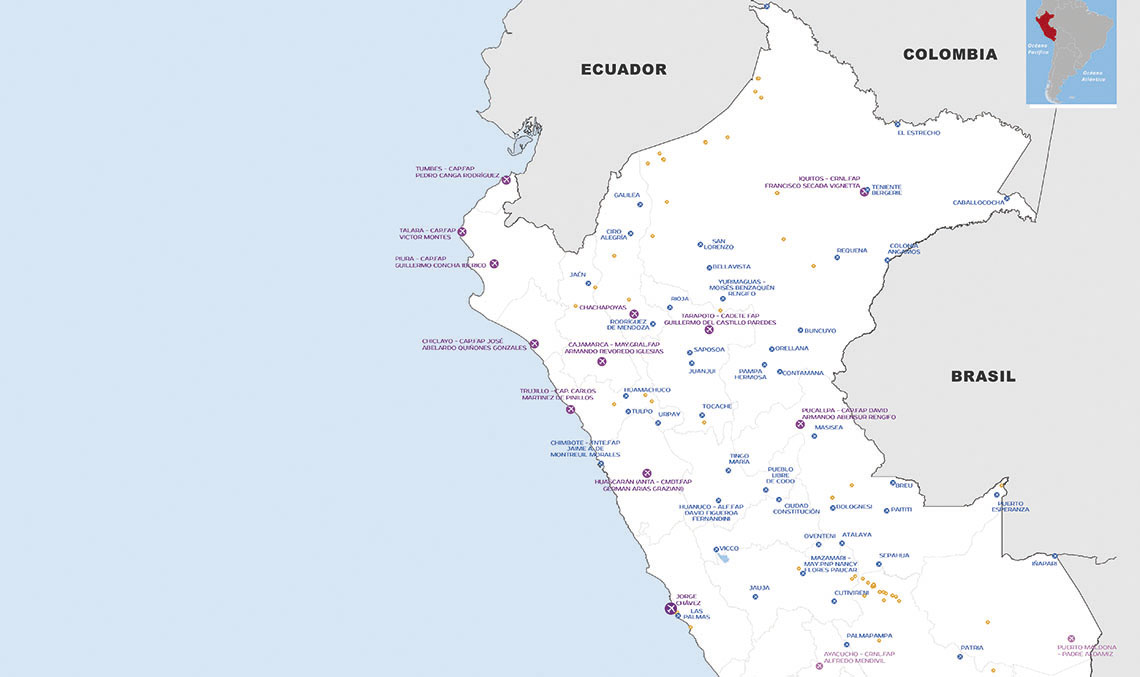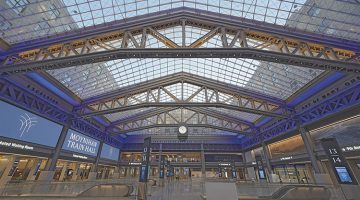In 2015, a total of 20.1 million passengers departed and arrived on domestic flights in Peru, an 11% increase from 2014, according to data from OSITRAN, Peru’s public transportation infrastructure regulator. In terms of international flights, there were 6.3 million passengers, a 6.5% increase. In addition, more than 329,000 tons of cargo, including 270,000 tons of international cargo was moved. Despite the fact that this was slightly less than 2014, the trend for the last 10 years is clearly upward.
In response to this continuous increase in demand, the country’s main airports, which are managed through concessions, have undertaken expansion and modernization processes. The Peruvian government began the airport concession process in 2000, entrusting the execution of the work to new managers under public supervision. Ineco, in a consortium with the Peruvian engineering firm CESEL, is currently involved in the expansion projects for two airports: the main international airport, the Jorge Chávez Airport in Lima, which was awarded to Lima Airport Partners (LAP) in 2001 (see IT53), and the Chiclayo Airport, in the north. The Chiclayo Airport is managed by Aeropuertos del Perú (AdP), which was granted the concession in 2006 as part of a package that also included the airfields in Anta, Cajamarca, Chachapoyas, Iquitos, Pisco, Piura, Pucallpa, Talara, Tarapoto, Trujillo and Tumbes (see IT58).
In 2011, the second package, of six airports, was awarded to another company, Aeropuertos Andinos del Perú, S.A., followed by the concession for the new Chinchero airport, to the Sociedad Aeroportuaria Kuntur Wasi S.A., in 2014. Lastly, the concession for the third group (Jauja, Huánuco and Jaén), is expected to be awarded soon, according to the Ministry of Transport and Communications.
THE EXPANSION OF THE CHICLAYO AIRPORT
Aeropuertos del Perú (AdP) has contracted Ineco to prepare the Profile Level Preinvestment and Feasibility Studies for the upgrade project of the FAP José Abelardo Quiñones Gonzales de Chiclayo International Airport (see IT58). On 09/01/17, it received approval for the ‘Profile Level’ preinvestment document from the Ministry of Transportation and Communications of Peru. The goal is to increase the airport’s capacity from 451,000 passengers in 2014 to 2.6 million in 2038.
TOURISM AND EXPORTS
As these are perishable products, air is the method of transport that is in the greatest demand, which in turn requires airports to have adequate facilities for this type of cargo. At the same time, tourism has started to increase at a healthy pace in recent years. In 2015, Peru rose to 58th (out of a total of 141 countries) in the World Economic Forum’s Travel and Tourism Competitiveness Ranking, 15 higher than in the previous ranking just two years earlier. In 2015, the number of international tourists increased 7.5%, up to 3.5 million, according to the country’s Ministry of Commerce and Tourism (MINCETUR). 60% of the visitors arrived by plane, according to figures from IATA, the world airline association. Tourists are attracted by the country’s natural, archaeological and cultural wealth, with 12 UNESCO World Heritage sites, along with other attractions, as well as its gastronomy, which 40% of the total visitors cite as a reason for travelling.
WORK PLANNED FOR THE CHICLAYO AIRPORT
- Runway and taxiways: extension of runway 19, widening of the runway strip to 150 meters on each side of the runway axis, shifting of both ends of the runway to the north, upgrading of the Instrument Landing System (ILS) and extension of the taxiways parallel to the runway, in both the military and civilian zones.
- Aprons: commercial terminal apron with seven parking stands for type C aircraft, four for type-E cargo aircraft, and seven for type-B general aviation aircraft and three helipads.
- New terminal building covering a total area of 41,000 m2, 10 check-in counters, six security checkpoints in departures and five immigration checkpoints in arrivals; seven boarding lounges and four boarding bridges per contact; four baggage claim rooms and three customs control areas.
- Car parking: 476 spaces, including public parking, overnight parking and staff parking and 45 spaces for rental vehicles.
- New accesses to terminal buildings.
- New CORPAC facilities: 27-metre control tower, administration building, AIS/ARO offices, power station, meteorological garden and antenna field.
- New category 9 Fire Extinguishing Services.
- New fuel plant.
- Cargo: new terminal with cold storage area with 1,800 m2 and 3,600 m2 of warehouse storage.
- Two handling buildings.
- Hangars: one maintenance hangar for type-C aircraft and three hangars for general aviation.
- Sanitation area: with treatment and sterilization units for hazardous waste, trash collection and waste water treatment.
- Service area and police station.






